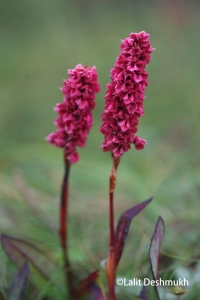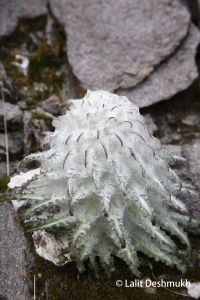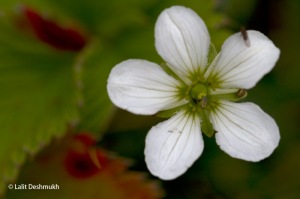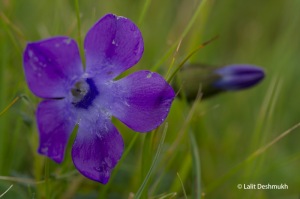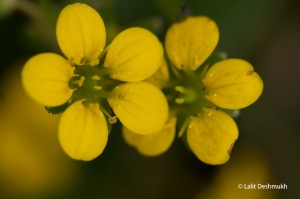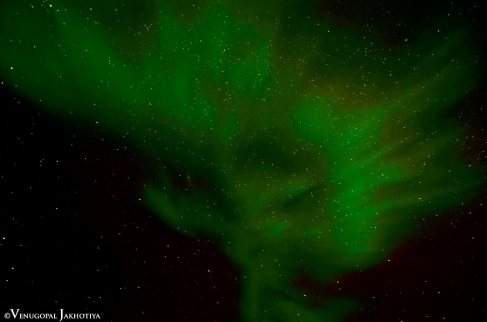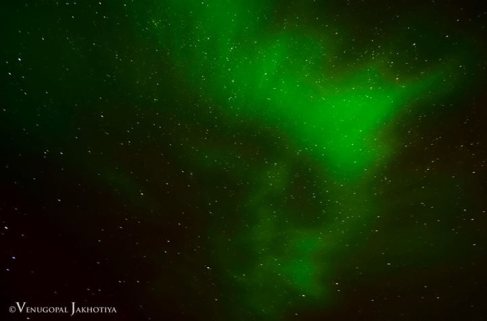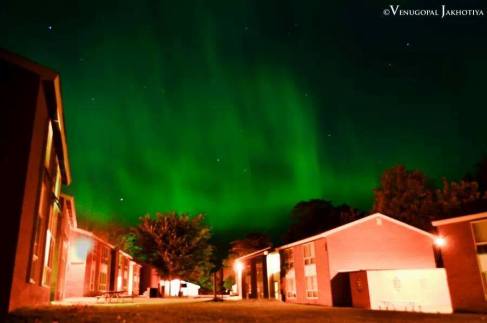Food Information by: Saee Bhurke and local halwais 🙂
Editor: Himalee Adhav
Photographer: Saee Bhurke
India is a country where diversity is personified. Not only do so many cultures and religions abound and exist in harmony but here, in India the climate and lifestyle of each and every part is refreshingly different.
The Indians are among the luckiest people in the world as they have all types of climates throughout the country. We have snow-clad mountains, rainforests, backwaters, deserts, scrub land, plains, plateaux spread across this incredible country of ours.With the changes in landforms, there are changes in the way of living and diet of the people all across India.
To explore this diversity in the ‘food-style’ of people all around India, Team Impressions brings forth a series of Food Blogs: Zest of India. Join us on our journey as we roam through different parts of India exploring this amazing world of amazing food!
Bon Appétit!
Rajasthan (Pushkar) Part I
It has been in my habit since childhood, to explore and find new tastes each time I visit a new place. May it be from roadside food or a ‘Royal Meal’!
Fortunately, being a gourmet (a food lover) and a wish to be an explorer, have taken me to so many places across India.
As we all know, India has been really important to the contribution of spices and diverse cuisines, in the world history. The speciality here is regional variety and types of food sources that can be grown locally and mouth watering tastes from sweet ‘n’ sour to piping hot.
Tasty combinations of food types to tickle your taste buds slowly become apparent to a foodie’s eye, as one enjoys these traditionally prepared dishes, which are as per the local people’s daily routine, health and fitness, food production of each place and availability of spices.
Rajasthani cuisine….. my personal favorite! The Rajputi royalty reflects in it……
It is not just food to fill your tummy and fulfill the hunger, it portrays the Rajasthani & Marwari culture and their lifestyle.
I got a chance to explore a few of the famous dishes from this land of deserts.
Last year, while leading a photography tour in the town of Pushkar (central Rajasthan) in November 2013, capturing the moods of the famous “Camel Fair “; our little group enjoyed loads of unique sweets and snacks from the halwai shops in the fair.
As the fair crowd rushes in, people of Pushkar joyfully greet and welcome all with their traditional cuisine.
Sweets like Maalpua, Rabdi, Jalebi, Ghenwar and Namkins (tea time snacks or breakfast) like Kachori, Pakode, Samose and many more…… all made either in rich milk or pure ghee!
Ready to be eaten as they are without heating!
(1) Dahi-Pakode (2) Maalpua swimming in Sugar syrup
(3) Roadside chatpata snacks (4) Sweet-Chilled Rabdi
Availability of drinking water has been a historical problem in this state. Hence, majority of the food types are prepared in/of milk and ghee, as they last for a longer duration.
The food also mainly consists of many types of flours like gram flour, wheat flour, bajra flour, corn flour and many more. Gram flour (besan) is commonly used in everyday meal.
Inspite of very less availability of fresh green leafy vegetables, there are many types of curries and sabjis which are served as main courses for a meal.
A few favorites of these I tasted were,
Chanaa Masala (Chickpeas in red gravy), Besan-Gatte ki sabji (Gram flour chunks cooked in yellow gravy), Ker-Saangri ki sabji (local vegetable stir-fried in spices), Rajasthani magaudi ,Kadhi-khichadi (Curry made out of curd served on spices flavored rice), Baingan masala (eggplant cooked in combinations of traditional Rajasthani spices) served with either Bajreki roti (Millet bread) or Makkeki roti (corn bread) covered in extra ghee or butter!
A large bowl full of thick, creamy curds for more flavor and jaggery pieces to conclude the meal.
And, of course ….. the one and only “Daal-Bati-Churma” served with spicy garlic chutney!!!
It consists of three parts as mentioned in its name,
Daal (spiced) – Stew prepared from pulses like Toor/ Chickpeas, flavored with spices like turmeric, curry leaves, dried red chilli powder with a tadka of ghee. It is rich in proteins.
Baati – It is a type of hard bread of grilled or baked wheat flour dough. Highly nutritious.
Churma (sweet) – It is a sweet made of wheat flour, sugar and ghee, stuffed with dry fruits.
The traditional way to serve it is to first, coarsely mash the Baati in the Daal, then pour pure Ghee on top of it. The Churma, being a sweet complements it perfectly!
It is commonly served at all festivities, including religious occasions and wedding ceremonies in Rajasthan.
From the Camel Fair grounds to the temple ghats, situated in the centre of the town of Pushkar, lies a Tourist Market. One can easily find many snacks stalls, halwai shops and dhabas on every street corner……..
Well…!!! The search for more delicious food gets even more interesting as you enter the market lanes of Pushkar, after visiting the famous Brahma temple.
If you are planning to visit Pushkar in winter, then here’s a Quick Tip: Do not forget to have a ‘sip’ of hot tea from the roadside chaiwala with a big moustache, just at the entrance to the camel grounds, in a chilled, foggy morning! Just perfect…….!!!
In all of the hubbub of colorful people, camel sounds, fair announcements, yells of merchants and halwais inviting for breakfast, bhajan song cassette echoing loudly from the early hours of the morning ;
There comes a time when you can’t feel your legs after wandering around endlessly.
Take a halt for a moment….. and listen to your hunger!! 😉
Let’s see…. what will be served in my plate, the next time I explore Rajasthan!!!

Valley Times
Author: Sarang Mhaskar
Photographs by: Sarang Mhaskar
Editor: Himalee Adhav
When winter sets in, troops of bird-watchers and photographers in Pune make a beeline for the Sinhagad Valley. The reason for this is the abundance of migratory as well as resident birds seen in “the Valley”, as it is called by Puneites. The Valley is basically the region around the Atkarwadi village at the foot of the Sinhagad Fort and is a birder’s paradise.
Colorful and rare migratory as well as resident birds have been spotted in the Valley.
These include the Asian Paradise Flycatcher, the Black-naped Monarch, the Ultramarine Flycatcher, the Verditer Flycatcher, the Tickell’s Blue Flycatcher, the Oriental Magpie Robin, Ashy Prinia, Spotted Munia, etc. Mammals like the Jungle Cat have also been seen here.
The biodiversity in this area can be attributed to the weather in this area which is comparatively warmer than the cold environs from where the migratory birds migrate southwards.
The availability of water in form of small springs, here and there in the valley is conducive to the birds’ needs. Availability of food is an additional reason as the area is abundant in insects of all sorts that are relished by the birds like grasshoppers, butterflies, crickets, etc.
Migration of Birds :-
Why do birds migrate..??
- Birds migrate to move from areas of low or decreasing resources to areas of high or increasing resources. It is a regular seasonal movement. Migrating birds navigate using sun, stars and earth’s magnetic field. There are different types of migration such as short distance migration, medium distance migration, long distance migration.
Let’s read about some of the birds in detail:
1) Asian Paradise Flycatcher-
Scientific Name – Terpsiphone paradisi
Local Name – Swargiya Nartak
The Asian Paradise Flycatcher is a resident migratory bird. Asian Paradise Flycatchers prefer thick forests and well-wooded habitats. They spend the winter season in tropical Asia. These birds are known to dive from perches to bathe in pools of water for quite some amount of time.
2) Black-naped Monarch-
Scientific Name – Hypothymis azurea
Local Name – Katkatya
The Black-naped Monarch is a widespread resident bird in India. The male of this species is entirely azure-blue, with a black nape-patch and a black eye. The female has duller blue head & lacks the black nape-patch. This bird mainly occupies broadleaved forests and mainly feeds on insects.
3) Verditer Flycatcher-
Scientific Name – Eumyias thalassinus
Local Name – Nilamani
The Verditer Flycatcher is a summer visitor to the Himalayas and NE India and is widespread in winter. It prefers open forest, tall trees in open areas as habitat. The male of this species is entirely greenish-blue and the female has greyish blue underparts.
4) Tickell’s Blue Flycatcher
Scientific Name – Cyornis tickelliae
Local Name – Nilima
The Tickell’s Blue Flycatcher is a resident bird in India. It has a yellowish-orange throat and blue body feathers. The habitat it prefers is open dry forest & wooded areas. Tickell’s Blue Flycatcher is a small, insectivorous bird. They are mainly found single or in pairs. They capture insects from the foliage.
5) Oriental Magpie Robin
Scientific Name – Copsychus saularis
Local Name – Dayal
The Oriental Magpie Robin is a widespread resident bird. The bird has a characteristic white wing patch in all of its plumages. The male of this species has glossy blue-black head while the female has a bluish-grey head. Its preferred habitat is open forest. Their diet includes insects, fruits and berries.
6) Indian Blackbird
Scientific Name – Turdus simillimus
Local Name – Kalu
It is a summer visitor to the NW parts of Maharashtra. It prefers to live in moist, dense forests. The male of this species have brownish upperparts with dark brown to blackish crown. The female are more uniform brown with paler underparts. They mainly feeds on fruits and insects.
These and a lot many birds can be seen in the Sinhagad Valley.
Photographing these birds is a joy for many.
However, certain ethics should be kept in mind while photographing the birds.
1) Along with photographing these birds in their natural habitat, study the different aspects of the bird behavior.
2) Avoid disturbing them or interfering with their natural behaviour.
3) Avoid using flash while photographing as the use of flash can disturb the birds severely.
4) Do not approach bird nests and do not damage the vegetation around you.
5) View the birds from a safe distance and enjoy their beauty!
Take a lot of photos, enjoy them and learn more about these birds! Be a role model as a photographer and citizen. Educate others through your actions and promote the conservation of the birds in the Valley.
Reference :- Birds of the Indian subcontinent by Richard Grimmett, Carol Inskipp, Tim Inskipp
Botanical Information by: Sadhana Deshmukh
Editor: Himalee Adhav
Photographer: Lalit Deshmukh
The Himalayas, the ‘roof-of-the-world’ are the highest mountain ranges in the world. We usually imagine them to be cold, snow-covered places with little or no vegetation. However, as with every other place on the earth, the plant kingdom doesn’t cease to amaze us with its assorted collection of colorful flowers that can be seen blooming all over these rugged mountains and in the valleys that lie within.
This series of blogs will cast a light upon the various flora seen in and around the Roopkund Lake in Uttarakhand. The photographs have been captured at altitudes ranging from 5500 ft., in the Garhwal region of the Lesser Himalayas or the Himachals to 16700 ft., in the Higher Himalayas or the Himadris, during a trek to the Roopkund Lake.
#11 Himalayan Fleeceflower
Botanical Name: Polygonum affine
Family: Polygonaceae
The Himalayan Fleeceflower is a low-creeping, densely-tufted alpine herb. Many individuals of these herbs grow together forming a mat on the ground. The leaves are narrow and elliptical. Their leaves are mostly at the base and the mid-vein of the leaves is prominent.The Himalayan Fleeceflower is found throughout the Himalayas.
#12 Snowball Plant
Botanical Name: Saussurea gossypiphora
Family: Asteraceae
Local Name: Kasturi Kamal
The Snowball plant looks like a wool-covered ball of snow. The shape of this plant is globular. The name of the species, gossypiphora, means cotton-bearing. The leaves of this plant are embedded in the wool that covers the plant. A species belonging to the Threatened category, this is considered a sacred plant, locally. Its medicinal properties include wound-healing, asthma and skin diseases.
#13 Himalayan Bog Star
Botanical Name: Parnassia nubicola
Family: Saxifragaceae
Local Name: Phutkya
The Himalayan Bog Star is a plant bearing white-colored flowers. This plant is a perennial herb. Nubicola means one that occurs in the mountains. The plant extract is used for healing food poisoning and rootstocks are used against external snakebites.
#14 Small-leaved Trailing Bellflower
Botanical Name: Cyananthus microphyllus
Family: Campanulaceae
It is a low-growing alpine herb. The flowers are blue-colored and the leaves are small. Thus, the Genus name is Cyananthus meaning blue flower and Species name is microphyllus meaning small leaves. It needs humus rich soil and a bit of shade for surviving. It is a native plant of the Himalayas.
#15 Himalayan Saxifraga
Botanical Name: Saxifraga parnassifolia
Family: Saxifragaceae
The Himalayan Saxifraga is a perennial herb. In Latin, Saxum means stone and frango means to break. Thus, these are the plants whose roots can penetrate rock crevices and attach these plants to any such substratum. These herbs are found in the Himalayas in rock crevices in the mountains and also in the alpine meadows.
References:
Book References:
1) Valley of Flowers by K.R.Keshava Murthy
2) Concise Flowers of the Himalaya by Oleg Polunin & Adam Stainton
Web Reference:
Botanical Information by: Sadhana Deshmukh
Editor: Himalee Adhav
Photographer: Lalit Deshmukh
The Himalayas, the ‘roof-of-the-world’ are the highest mountain ranges in the world. We usually imagine them to be cold, snow-covered places with little or no vegetation. However, as with every other place on the earth, the plant kingdom doesn’t cease to amaze us with its assorted collection of colorful flowers that can be seen blooming all over these rugged mountains and in the valleys that lie within.
This series of blogs will cast a light upon the various flora seen in and around the Roopkund Lake in Uttarakhand. The photographs have been captured at altitudes ranging from 5500 ft., in the Garhwal region of the Lesser Himalayas or the Himachals to 16700 ft., in the Higher Himalayas or the Himadris, during a trek to the Roopkund Lake.
#6 Long-leaved Tansy
Botanical Name: Hippolyta dolicophylla
Family: Asteraceae
Local Name: Dhoop, Guggul
A member of the sunflower family, this is an erect, perennial herb with yellow-colored flowers.
The flowers of this herb are dense clusters at the top with leaves on the stalk.
In Greek, dolicophylla means long-leaves. That is the origin of the name of this species which has characteristic long and dissected leaves. Long-leaved Tansy is found across the Himalayas between the altitudes of 3300-4400 m.
#7 Woolly Pearly Everlasting
Botanical Name: Anaphalis triplinervis
Family: Asteraceae
Local Name: Bugla, Bukki
Anaphalis means a ‘lock of wool’. This is how these delicate, beautiful flowers appear at first sight.
Woolly Pearly Everlasting is an erect herb with a stem that does not branch much. The leaves are spoon-shaped, elliptic,
ovate and three-nerved. This herb is found in the Himalayas in open meadows and grassy slopes.
#8 Crimson Knotweed
Botanical Name: Polygonum milletii
Family: Polygonaceae
The Crimson Knotweed has characteristic crimson-colored, dense flower spikes.
The leaves are oblongated and blunt. The stem is often covered with bases of previous leaves.
Crimson Knotweed is found in the Himalayas at an altitude of 3000-4000 m. from West Nepal to SW China.
#9 Blue Poppy-Queen of the Himalayan Flowers
Botanical Name: Meconopsis aculeata
Family: Papaveraceae
Local Name: Neela Posta
The stem, leaves and fruit of the Blue Poppy are prickly. This is their adaptation to the alpine climate.
Various parts of the plant are valued for their tonic and analgesic properties. Roots of this plant are poisonous and
display narcotic properties.
#10 Sacred Lotus-Brahmakamal
Botanical Name: Saussurea obvallata
Family: Compositae
Local Name: Kapfu
The Sacred Lotus or the Brahmakamal is the most popular and reverred flower of the Himalayas. It is considered as an offering
for various Himalayan deities like Badrinath, Nandadevi, etc. The purple flowerheads of the Brahmakamal are enclosed within
large, leafy, papery, boat-shaped bracts. Its roots are used to treat bruises and cuts and it is also helpful in the treatment of paralysis.
Due to these properties, it is used on a large scale and this has led to its status being Critically Endangered.
References:
Book References:
1) Valley of Flowers by K.R.Keshava Murthy
2) Concise Flowers of the Himalaya by Oleg Polunin & Adam Stainton
Web Reference:
Botanical Information by: Sadhana Deshmukh
Editor: Himalee Adhav
Photographer: Lalit Deshmukh
The Himalayas, the ‘roof-of-the-world’ are the highest mountain ranges in the world. We usually imagine them to be cold, snow-covered places with little or no vegetation. However, as with every other place on the earth, the plant kingdom doesn’t cease to amaze us with its assorted collection of colorful flowers that can be seen blooming all over these rugged mountains and in the valleys that lie within.
This series of blogs will cast a light upon the various flora seen in and around the Roopkund Lake in Uttarakhand. The photographs have been captured at altitudes ranging from 5500 ft., in the Garhwal region of the Lesser Himalayas or the Himachals to 16700 ft., in the Higher Himalayas or the Himadris, during a trek to the Roopkund Lake.
#1 Roscoe’s Lily
Genus: Roscoea
Family: Zingiberaceae
This tiny, purple-colored flower is a member of the Ginger family. It is native to the Himalayas. An exotic-looking beauty, it resembles the orchids. The foliage of this species is glossy. Its roots are said to have tonic properties and they are used in veterinary medicines.
#2 Bellflower
Botanical Name: Codonopsis purpurea
Family: Campanulaceae
In Greek, Codonopsis means bell-like, giving the genus appropriate botanical name. It is a weak-stemmed plant, often found hanging from cliffs and banks. Some types of this species have edible roots. It is endemic to East Asia.
#3 Wallich’s Thistle
Botanical Name: Cirsium wallichii
Family: Compositae
This little flower is called ‘Bursa’ or ‘Kandaya’, locally. It is a spiny plant whose leaves are stalk less. It grows on waysides and is seen on bunds of agricultural fields. Some of these plants were used as a remedy against varicose veins. Also, the pith of the stem is used for quenching thirst.
#4 Aaron’s Rod, Adam’s Flannel, Fairy Tale Plant
Botanical Name: Verbascum thapsus
Family: Scrophulariaceae
This flower grows on mountain slopes and in meadows. The hair on the leaves of this plant is an irritant. The flowers are woolly. The seeds are considered as narcotic and used in Hysteria. The leaves are used in the treatment of cough and diarrhoea.The spikes are used in treating Leucoderma. Locally, it is called as ‘Akulbir’ or ‘Kari Tamakho’.
#5 Spiked Ginger Lily
Botanical Name: Hedychium spicatum
Family: Zingiberaceae
They are called as Ban-Haldi or Kachor, locally. These flowers are found in habitats like shady, forest places and wayside grassy slopes. The leaves of this species appear like Haldi leaves, while, the flowers are sweet-scented. A perfume called ‘Abeer’ is obtained from the rootstocks of these flowers. Their rootstocks have medicinal values as well and are used in the treatment of asthma, bronchitis, liver-disorders and snake bites.
These are some of the very beautiful and unique flowers seen in the Himalayas. Usually, we pass them by without noticing them or at most, may be appreciating their physical beauty. However, their many uses and interesting facts are mostly overlooked.
References:
Book References:
1) Valley of Flowers by K.R.Keshava Murthy
2) Concise Flowers of the Himalaya by Oleg Polunin & Adam Stainton
Web Reference:
संकल्पना आणि लेखन : आसावरी जोशी छायाचित्र : ललीत देशमुख
माझ्यासाठी लडाख
हिमालयातील उंच डोंगरांचे, पर्वतांचे, पर्वतांच्या रांगांचे, माथ्यावरील बर्फाचे, खोल दऱ्यांचे, थंड पाण्याच्या नद्यांचे , झऱ्यांचे धबधब्यांचे, निळ्याशार तळ्यांचे, gorgeous gorges चे , १0000 ते १८000 फूट उंचीवरील ठिकाणांचे
माझ्यासाठी लडाख
वळणा वळणा च्या रस्त्यांचे, अतिउंचा वरील खिण्डिन्चे , त्यावरील “Gentle with Curves – Handle with Care” अशा खुसखुशीत पाट्यांचे
माझ्यासाठी लडाख
उंचावर वसलेल्या Monastaries चे, त्यातील बुद्धाच्या मूर्तीचे, दलाइलामांच्या प्रसन्न तस्विरी चे, तेथील भित्तीचित्रांचे, त्या दालनाच्या अंधारामधील समई प्रकाशाचे आणि लामांच्या सुरेल शांत प्रार्थनेचे
माझ्यासाठी लडाख
LOC ने बद्ध असलेले, पाकिस्तान/चीन या मित्र राष्ट्र होऊ न शकणाऱ्या अशा शेजाऱ्यांचे , जागोजागी वसलेल्या Military Camps चे, Operation Vijay चित्रबद्ध केलेल्या Hall of Fame चे
माझ्यासाठी लडाख
पीरपांजाल, झान्स्कार , लडाख , काराकोरम अशा Himalayan Ranges चे, चिनाब, इन्दु , झान्स्कार, श्योक , डोडा, चंद्रा , भागा अशा नद्यांचे आणि त्यांच्या संगमांचे, pangong , tsokar , tso mariri अशा Lakes चे, Keylong ,baralach , Lachulung , Tanglung , Chang आणि Khardung या La चे , Hemis, Thikase , Deskit Monastaries चे, धवल शुभ्र शांती स्तूपाचे आणि सूर्यास्तावेळी वैविध्य पूर्ण रंगांचे दर्शन घडविणाऱ्या सभोवताल परिसराचे , Nubra Valley चे, Hundar च्या Sand Dunes चे, त्यातील Patterns चे, Sand Storm चे आणि बेभरवशी निसर्ग प्रदर्शनाचे , लेह आणि शेय Palace चे
माझ्यासाठी लडाख
Pangong Lake चे, turquoize पाण्याचे आणि त्यावर उठणाऱ्या तरंगांचे, सूर्योदय सूर्यास्ताच्या वेळेस लालिमा पसरविणाऱ्या अद्भुत रंगांची उधळण करणाऱ्या सृष्टी कर्त्याचे ,अंधाराच्या साम्राज्यात लक्ष ताऱ्यांच्या सान्निध्यात रमण्याचे
माझ्यासाठी लडाख
Beas, Padma Lodge, Zing Zing Bar, Ladakh Continental , K2, Water mark Tent चे आणि प्रत्येक ठिकाणच्या चविष्ट खाद्य पदार्थांचे , भोजनाचे
माझ्यासाठी लडाख
सुंदर गुलाबी गालांच्या लडाखी स्त्रियांचे , त्यांच्या गोबऱ्या गोबऱ्या मुलांचे , महम्मद ड्रायव्हर चे, त्याच्या Kangaroo style बसण्याचे, ४ महिने लेह मध्ये काम करून Off Season च्या ८ महिन्यांसाठी गोव्याला प्रयाण करणाऱ्या कामकऱ्याचे आणि ऑफ सिझन – पिक सिझन ची तमा न बाळगता हीच कर्मभूमी असणाऱ्या कित्येक लडाखीवासियांचे
माझ्यासाठी लडाख
येथील चौकोनी घरांचे , घरांसामोरील बागांचे, बागांमधील विविध फुले, भाज्या , पिकांचे, Momo , Thukpa , Kothay , Cheng या typical Tibetian पदार्थांचे
माझ्यासाठी लडाख
बेभान होऊन बेधुंद पणे फोटोग्राफी मध्ये आकंठ बुडालेल्या ललितचे
वय लहान पण फोटोग्राफी sense महान, उत्साहाचा खळाळता झरा अशा हसऱ्या सईचे
फुलांच्या Macro फोटोग्राफीची नशा चढणाऱ्या साधनाचे
पक्ष्यांच्या फोटोग्राफीची खास आवड असणाऱ्या अभयचे
आपल्या पतीच्या फोटोग्राफीचे मनापासून कौतुक करत या common छंदात तोडीस तोड साथ देणाऱ्या वैशालीचे
बंकज…. सॉरी…. पंकज ! आणि त्याच्या खुमासदार किश्श्यांचे
Stephen Hawkings च्या चेहऱ्याशी साम्य दर्शविणाऱ्या प्रतापचे आणि त्याच्या लडिवाळ ३ रीतील मुलाच्या acting चे
Body Builder विक्रांतचे आणि या जोडगोळीच्या videography मधील अप्रतीम Syncronization चे
Chocolate प्रेमी आणि प्रसंगी थंड पाण्यात सूर मारून मदतीचा हात देणाऱ्या Nevil the Devil चे
मितभाषी आणि Eatable लीप बाम प्रसिद्ध करणाऱ्या मीनाक्षीचे
फुलपाखरासारखी भिरभिरणाऱ्या मधुराचे
आपल्या छंदासाठी समविचारी group बरोबर एन्जोय करणाऱ्या श्रीकांतचे
आणि आपल्या नवऱ्या सारखेच फोटोग्राफी छंदात बुडालेल्या इतरांच्या वेडाचे आश्चर्य करणाऱ्या आसावरीचे
या अतूट मैत्रीच्या बंधनात बद्ध झालेल्या १३ जणांच्या group चे
माझ्यासाठी लडाख
छोट्याशा छोट्या गोष्टीत सौंदर्य कसे पाहायचे हे शिकवणाऱ्या, फोटोग्राफी हा Common platform देणाऱ्या आणि
Composition, frame, cut-light, gradation, F8, F22, ISO 100, ISO 3200, 10-22, 28-135, 100-400, 150-500 , shutter speed, aperture, catch-light, shadows, star trail, focus point, focal point, over & under exposed, tonality, defraction, spot metering अशा अनाकलनीय शब्दांची या अनभिज्ञ आसावरीला तोंड ओळख घडविणाऱ्या Team Impression चे
आणि म्हणूनच लाख लाख आभार ज्याने मला लडाख जरी फोटोमध्ये नाही तरी शब्दांमध्ये बद्ध करण्याची संधी देणाऱ्या Team Impression चे!!
Photographer and Writer: Venugopal Jakhotiya
It was just another day in the life of a normal master’s student in the US – Assignments, lectures, part-time job and a lot of joking around. The only blip in the radar was that at around 9 pm one of friends received news that there was a forecast for northern lights show tonight at around 10 pm. He told me of this and I rushed to check the sky and after spending some time surveying it I was disappointed to see that there was nothing special in the sky.
I proceeded to complete a small assignment at my friend’s place. While returning home, friends with me started pointing towards the sky perceiving a strange lightness in one particular direction. After a short discussion, it was confirmed that this was indeed a sighting of the Northern lights. I rushed home, put my camera in the bag and hurriedly started towards a place near the university and to the shore of the Portage lake. About mid-way through, I realized that I had forgotten my newly acquired wireless remote shutter release. I gave my bag and phone to my friends and ran at top speed back towards my home. People watching must have thought me as a maniac running around at midnight. Also, another disappointing realization was in store. I usually rent the tripod from our library whenever I go out to click photos. I had done so a few days ago and being due, I had returned it earlier that day. The library closes at midnight so there was no chance for me to check out the tripod for the northern lights. Nevertheless, we reached the place called Prince’s Point and there we could more prominently see the Aurora Borealis as there were no artificial lights to obscure the view.
The next main difficulty was getting a stable base for a make-shift tripod. There was bench we tried to shift but it was fixed by a rope. I put my Camera on this bench, pointing the lens towards the open sky, using my phone to give it an angle towards a shape of the northern light which could be a potential abstract. Put my settings to 20 sec, f/3.5 ISO 100, Manual Focus-Infinity and released the shutter. In those 20 sec I was asking people to stay away from the bench so as to avoid any vibration on the camera. And this was the image I got:
People around me started jumping with joy and a considerable pats on my back happened. Next, I tried to experiment with the shutter speed. Set it to 30 sec and got this pic:
Notice the elongated shape of the stars. There was some trouble with the focus, as in that type of darkness the camera doesn’t get any definite point to set its focus. I used manual focus and infinity as my focus point, but that didn’t quite work out for me. While returning home, at around 4 am, I gave it one last shot and put my camera on the benches in our street and clicked this:
All in all, the experience was out of this world and I hope to see the northern lights again. This time, fully prepared with equipment as well as sound advice from Lalit Sir. All the mistakes notwithstanding the ethereal nature of Aurora Borealis really did enchant me made me cognizant of the fact that we, human beings are nothing as compared to nature and its ability to astound us repeatedly.
About Aurora:
This is called Aurora Borealis aka northern lights in northern hemisphere, southern lights or Aurora Australis in the south. This is a phenomenon, created during the solar storm, where the ionized particles emit the energy in the form of light at different wavelengths, when they collide with gaseous particles from the earth’s atmosphere. Thanks to the earth’s hot iron core, which creates the magnetic field around the earth, that repels most of the solar flare away.
Aurora is more seen in the northern and southern latttudes of the earth, as the magntic field is weaker around the poles.
On Mars, the imapct of the solar storms are deadly. The theory and evidences state that, because the Mars’s core has died, it has taken an impact that most likely killed any life if ever there was!
Photographer and Writer: Venugopal Jakhotiya
Editor and Technical Information: Lalit Deshmukh
छायाचित्रकार आणि लेखक: हिमाली आढाव
चतुर या किड्याबद्दल मनुष्याला नेहमीच कुतूहल वाटते!
त्यांचे सप्तवर्णी पंख, त्यांचे चपळ, अनन्य उड्डान आणि त्यांचे चित्रवत, आकर्षक रंग हे आपल्या डोळ्यांसमोरून कधीच दखल न घेता जाऊ शकत नाहीत.
वसंत ऋतूची सुरुवातच झाली होती. तारीख होती १७ मार्च. कोवळं उन पडलं होतं. मी तळजाईवर माझ्या मॉर्निंग वॉकसाठी गेले होते तेव्हा ०९:१४च्या सुमारास हा सुंदर प्राणी माझ्या दृष्टीस पडला. ‘येलो टेल्ड एशी स्किमर’ नावाचा चतुर एका झाडाच्या छोट्या डहाळीवर कोवळं उन खात बसला होता.
- Yellow Tailed Ashy Skimmer by Himalee Adhav
सगळे चतुर हे ओडोनेटा या Order मध्ये येतात. ‘ओडोनेटा’ म्हणजे दात असलेले. या Order मधल्या सगळ्या किड्यांना खालच्या ओठांच्या ओळीत दात असतात. या Order च्या भारतात जवळ-जवळ ५०० जाती (Species) आहेत.
‘येलो टेल्ड एशी स्किमर’ याचे शास्त्रीय नाव हे Potamarcha congener असे आहे. स्किमर या Family मधला हा मध्यम आकाराचा चतुर आहे. याची महत्वाची वैशिष्ट्ये म्हणजे निळसर गळा, पिवळा किंवा चोकलेटी किंवा काळा चेहरा, वरच्या बाजूस लाल व खालच्या बाजूस हिरवे असे डोळे आणि चोकलेटी कोपरे असलेले पारदर्शक पंख.
चतुरांचे खाद्य म्हणजे डास, माश्या, मध-माश्या, मुंग्या, फुलपाखरं, इत्यादी. असतात. तर पक्षी, पाली, बेडूक, कोळी, मोठे चतुर, इत्यादी यांचे खाद्य चतुर असतात.
चतुरांचा जीवनक्रम हा फारच दुर्मिळ असतो. चतुराची प्रौढ-अवस्था हि जमिनीवर जगते तर त्याची अळी असलेली अवस्था हि पाण्यातच जगते.
चतुर हे एखाद्या पर्यावरणाच्या परिस्थितीच्या तंत्राचे फार महत्वाचे घटक असतात. चतुर हे डासांचे परजीवभक्षी प्राणी असल्यामुळे त्यांच्या संख्येवर नियंत्रण ठेवतात. त्यांची उपस्थिती हि पाण्याच्या चांगल्या दर्जाचे दर्शक आहे. थोडक्यात ते biological indicators आहेत जे पाणी स्वच्छ आहे कि नाही हे दर्शवतात. तसेच पाण्याचे प्रदूषण हे चतुरांसाठी घातक असते.
त्यांच्या आयुष्यातला सर्वात कमी वेळ चतुरांना उडण्यासाठी मिळतो. त्यांच्या या अशा अनोख्या जीवनावरून ते आपल्याला आयुष्याच्या प्रत्येक क्षणातील आनंद अनुभवण्याचा संदेश देतात!
References:
1. Dr. R M Sharma (ret.)
2. Book Reference: i) The Insects: An Outline of Entomology by P.J. Gullan & P.S. Cranston
ii) Introduction to Insect Behavior by Michael D. Atkins
3. Web Reference: Bug Walks with Ron Lyons: http://casswww.ucsd.edu/archive/personal/ron/CVNC/odonata/index.html
Photographer and Author: Ganesh Bagal
An Indian wedding is all about colors, drama, dance and, YES !!! Every photographer’s nightmare ‘a tricky exposure ‘ ( shadow -under or over exposure). I shoot every kind of photography but I just love photographing weddings. And why not ?!! ’cause only in wedding we get a chance to become an eye ( and seriously eye) for catching happiness of two persons… a moment of their lives.
For the big fat Indian weddings, I always carry studio light with me. Carrying good light and the high quality flash gun is the most important light arsenal in your bag.
Most Marathi weddings happen during the day time, many around noon. I still face one problem..almost always… the problem of low light situation! Probably because of weeding halls, unfriendly to the photographer 🙂 . and that’s when my studio light comes to rescue me. Modern studio light technology is able to handle every kind of situation, they create an environment suitable for photography.
Studio light has disadvantage too. Sometimes the brides and grooms feel awkward and you can’t carry studio light everywhere. I can’t imagine my wedding shoot without them but still I set them up near main stage area for ‘ mangalashtaka’ rituals. as well as when relatives and couples get together.
For other rituals (like Saptapadi) I rely on high quality speed light flash and fast lenses like 50mm – 85mm f/1.8 or f/1.4. These two tools catch magical moment during weddings.
There is an interesting story behind this snap. During this wedding of my friends, one video grapher (not my team member) started shooting using harsh mercury light.. and suddenly the atmosphere changed and filled with flat harsh bulb light. When you are working as a professional, you are not allowed to give excuses, you just have to do your job, and make best of it.
There is one small but very beautiful ceremony happens in almost each and every Marathi wedding. Bride and groom both touch there foreheads for just a few seconds. and during that short time, I have to clicked this image but not in a typical way, nor same angle and also without disturbing them. I wanted a snap with all the natural expressions. So I stood in the opposite direction of the videographer’s camera light, and at that angle I could get pretty soft light and the rim light on grooms hair, allowing me to see the expressions on bride’s face.
















